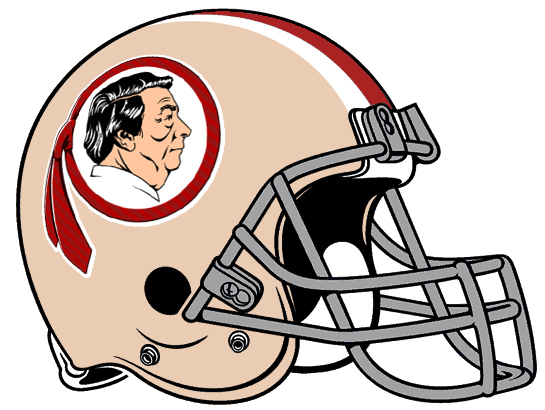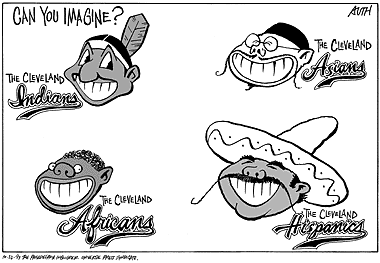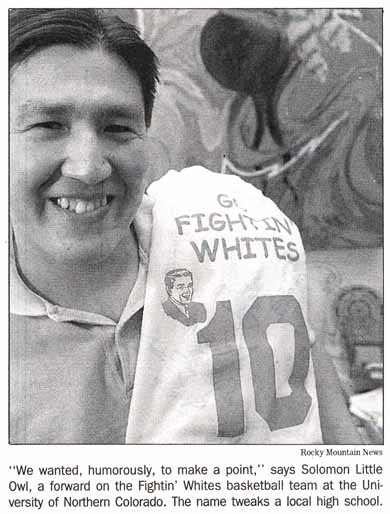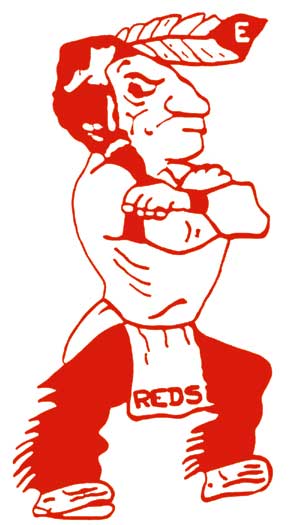What Do You Mean ‘We,’ Paleface?
The “team” has since grown into a project in which I have committed to challenging the use of culturally offensive mascots by spreading our message via the sale of Whiteskins merchandise. More importantly, the proceeds from these sales are donated to organizations working for the benefit of Native American communities, with a focus on encouraging sports participation among Native youth.

This is nothing new, of course. It's similar to the satirical Fightin' Whites team created a decade. Countless columnists have noted that we wouldn't tolerate teams named Blacks or Blackskins, Jews or Kikes, etc. Indeed, it's an obvious way to point out the offensiveness of the Washington Redskins and other Indian-themed nicknames and mascots.

Several of my colleagues applauded the Whiteskins parody. My opinion is that it and the Fightin' Whites parody were too tame. Now I've found an old Tim Wise column in which the author agrees with me.
Honky Wanna Cracker? Examining the Myth of “Reverse Racism”
By Tim Wise
Funny though the effort was, it has not only failed to make the point intended, but has been met with laughter and even outright support by white folks. Rush Limbaugh actually advertised for the team’s T-shirts on his radio program, and whites from coast to coast have been requesting team gear, thinking it funny, rather than demeaning, to be turned into a mascot. The difference, of course, is that it’s tough to negatively objectify a group whose power and position allows them to define or redefine the meaning of another group’s attempts at humor: in this case the attempt by Indian peoples to teach them a lesson. It’s tough to school the headmaster, in other words. Objectification works against the disempowered because they are disempowered. The process doesn’t work in reverse, or at least, making it work is a lot tougher than one might think. Turning Indians into mascots has been offensive because it perpetuates the dehumanization of such persons over many centuries, and the mentality of colonization and conquest. It is not as if one group (whites) merely chose to turn another group (Indians) into mascots as if by chance. Rather, it is that whites have consistently viewed Indians as less than human—as savage and “wild”—and have been able to not merely portray such imagery on athletic banners and uniforms, but in history books and literature more crucially.
In the case of the students at Northern, they would need to be far more acerbic in their appraisal of whites in order for their attempts at “reverse racism” to make the point intended. After all, “fightin” is not a negative trait in the eyes of most, and the 1950s iconography chosen for the uniforms was unlikely to be seen as that big a deal. Perhaps if they had settled on “slave-owning whiteys,” or “land-stealing whiteys,” or “smallpox-giving-on-purpose whiteys,” the point would have been made; and instead of a smiling “company man” logo, perhaps a Klansman, or skinhead as representative of the white race–now that would have been a nice functional equivalent of the screaming Indian warrior. Bottom line: you gotta go strong to turn the tables on the man, and irony won’t get it nine times out of ten. Without the power to define another’s reality, Indian activists are simply incapable of turning the tables with well-placed humor.
Simply put, what separates white racism from any other form and makes anti-black and brown humor more dangerous than its anti-white equivalent is the ability of the former to become lodged in the minds and perceptions of the citizenry. White perceptions are what end up counting in a white-dominated society. If whites say Indians are savages, be they “noble” or vicious, they’ll be seen in that light. If Indians say whites are mayonnaise-eating Amway salespeople, who the hell’s going to care? If anything, whites will simply turn it into a marketing opportunity. When you have the power, you can afford to be self-deprecating.
Below: Equivalent mascots? Nope. The Indian is much more stereotypical.



No comments:
Post a Comment